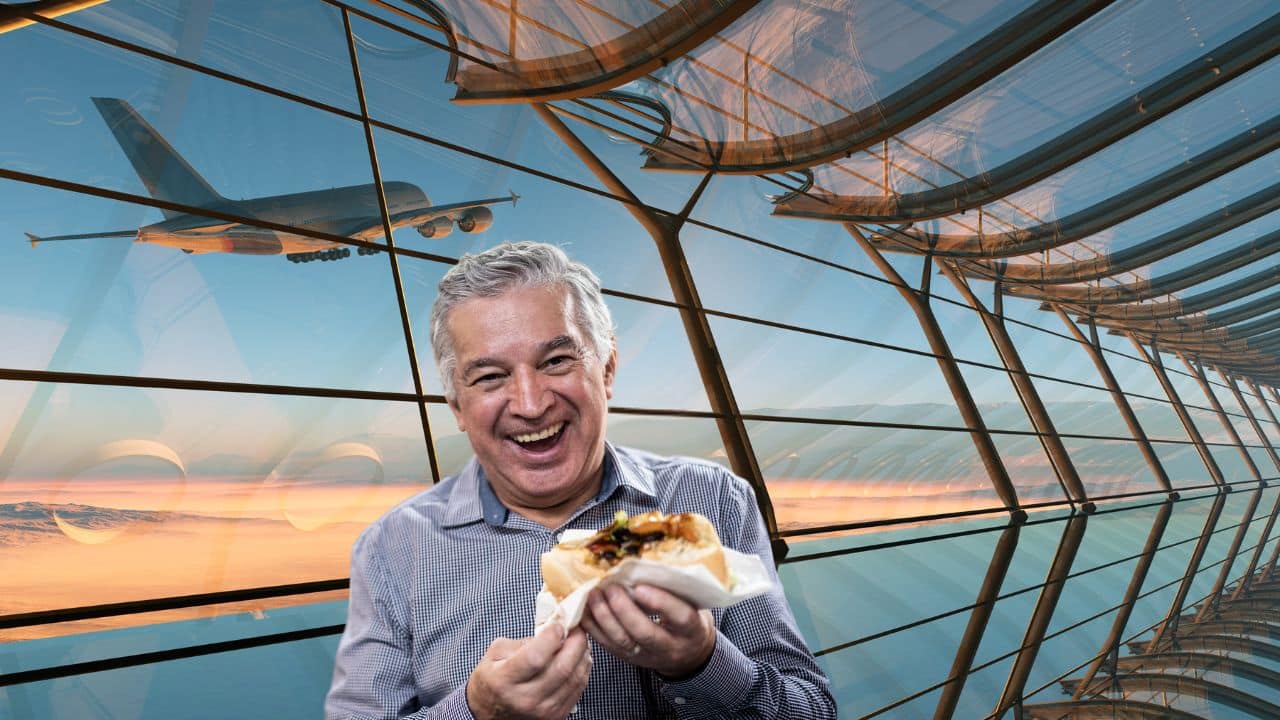Airports are bustling hubs filled with diverse food options designed to cater to travelers in a hurry. While the temptation to grab a quick bite before boarding is high, not all foods are ideal for consumption before or during a flight.
Eating the wrong foods can lead to discomfort, sluggishness, or even illness, ruining your travel experience. In this article, we’ll explore ten foods to avoid at the airport, why they can cause problems, and provide smarter alternatives to keep you comfortable and energized.
Why Airport Food Choices Matter?
Traveling can be stressful, with long hours of waiting, security checks, and sometimes tight connections. Eating the wrong food before a flight can worsen the experience by causing bloating, dehydration, or gastrointestinal distress. Your body undergoes unique stresses when flying, such as reduced oxygen levels, pressurized cabins, and dry air, which can amplify the effects of unhealthy or poorly chosen meals.
Making thoughtful food choices can ensure you stay energized, hydrated, and ready for your journey. Let’s dive into the top ten foods to avoid at the airport and explore why they’re not the best travel companions.
1. Greasy Fast Food
Fast food is readily available at most airports, and it’s hard to resist the allure of a burger and fries. However, greasy foods are heavy on the stomach and can cause indigestion, bloating, or heartburn. Airplane cabins already have lower air pressure, which can make your digestive system work harder to process high-fat meals.
Healthier Alternatives
Opt for grilled chicken wraps, salads, or a turkey sandwich if you need something filling but lighter. These options provide protein and nutrients without overwhelming your digestive system.
2. Spicy Foods
Spicy dishes can irritate the stomach lining and cause acid reflux, especially if you’re sitting for long periods on a plane. The pressurized cabin air can amplify these effects, leading to discomfort during the flight.
Why It’s Risky?
Capsaicin, the compound in spicy foods that gives them heat, can also trigger stomach cramps or an upset stomach, particularly for those with sensitive digestive systems.
Healthier Alternatives
Choose mild dishes like grilled vegetables, plain rice, or chicken to avoid any unnecessary gastric distress.
3. Carbonated Drinks
Sodas and other carbonated beverages might seem like a refreshing choice, but they can lead to bloating due to the trapped gas from carbonation. This discomfort is often exacerbated by the changes in air pressure during a flight.
Why It’s Risky?
The carbon dioxide in these drinks expands at high altitudes, making bloating or stomach pain more likely.
Healthier Alternatives
Stick to water, herbal teas, or electrolyte drinks. These options keep you hydrated without introducing excess gas into your system.
4. Alcohol
Many travelers enjoy a glass of wine or a cocktail before a flight, but alcohol is a dehydrating agent. Since airplane cabins already have low humidity levels, consuming alcohol can exacerbate dehydration, leading to fatigue, headaches, and dry skin.
Why It’s Risky?
Alcohol also impairs judgment and can disrupt your sleep cycle, which isn’t ideal when traveling across time zones.
Healthier Alternatives
Instead of alcohol, sip on sparkling water with a slice of lemon for a refreshing yet hydrating drink.
5. Dairy Products
While yogurt, cheese, or a creamy coffee might sound tempting, dairy can cause bloating or an upset stomach, especially for those with lactose intolerance. The confined space of an airplane cabin makes this an uncomfortable experience.
Why It’s Risky?
Even if you’re not lactose intolerant, heavy dairy consumption can contribute to sluggishness or discomfort.
Healthier Alternatives
Choose non-dairy options like almond or oat milk for your coffee, or snack on nuts and seeds for a protein boost.
6. Fried Snacks
From chicken tenders to onion rings, fried snacks are a common airport staple. However, fried foods are loaded with unhealthy fats, which can slow digestion and leave you feeling lethargic.
Why It’s Risky?
Fried foods are also high in sodium, increasing your risk of dehydration in the dry cabin air.
Healthier Alternatives
Look for baked or roasted options, such as trail mix, popcorn, or air-popped chips.
7. Raw Vegetables
While raw veggies are typically healthy, they can be hard to digest, especially when paired with dips like hummus or ranch dressing. The fiber content in raw vegetables can lead to bloating and gas, which are uncomfortable during long flights.
Why It’s Risky?
The reduced pressure in the cabin may make your digestive system less efficient at processing fibrous foods.
Healthier Alternatives
Opt for cooked vegetables or small portions of fruits like bananas or apples for easier digestion.
8. Sugary Treats and Pastries
Doughnuts, muffins, and candy bars might give you a quick energy boost, but their high sugar content can cause a crash later. This is particularly problematic on long flights where maintaining steady energy levels is important.
Why It’s Risky?
Sugary foods also contribute to dehydration, as your body uses more water to process the sugar.
Healthier Alternatives
Pack a granola bar, dark chocolate, or dried fruit for a more balanced and sustaining treat.
9. Seafood
While seafood might seem like a fancy choice, it’s best avoided at the airport. Improper storage or preparation can increase the risk of foodborne illnesses, and seafood tends to spoil faster than other protein sources.
Why It’s Risky?
The last thing you want is food poisoning before boarding a flight. Seafood with strong smells can also be unpleasant for fellow passengers.
Healthier Alternatives
Stick to lean meats like turkey or chicken, which are safer and easier to digest.
10. Large Portions
Overeating at the airport can lead to discomfort during your flight. Large meals stretch the stomach, making it harder to sit comfortably in the tight space of an airplane seat.
Why It’s Risky?
Your metabolism slows down when you’re inactive for long periods, making it harder for your body to process large quantities of food efficiently.
Healthier Alternatives
Opt for smaller, balanced meals or snacks, such as a small sandwich, a piece of fruit, or a handful of nuts.
Table: Foods to Avoid and Smarter Substitutes
| Food to Avoid | Healthier Alternative |
| Greasy fast food | Grilled chicken wrap, salad |
| Spicy foods | Plain rice, grilled vegetables |
| Carbonated drinks | Water, herbal tea |
| Alcohol | Sparkling water with lemon |
| Dairy products | Non-dairy alternatives |
| Fried snacks | Baked or roasted snacks |
| Raw vegetables | Cooked vegetables, bananas |
| Sugary treats and pastries | Dark chocolate, granola bar |
| Seafood | Chicken or turkey |
| Large portions | Smaller, balanced meals |
Final Thoughts
Eating the right foods before a flight can make all the difference in how you feel during and after your journey. While airports offer a wide variety of dining options, not all of them are suitable for air travel. Avoiding greasy, spicy, or overly sugary foods, and choosing lighter, nutrient-rich alternatives, can help you stay energized and comfortable.
Planning ahead by packing healthy snacks or researching food options at your departure airport can save you from making hasty decisions. Prioritize your health and comfort so that you arrive at your destination feeling your best.







































